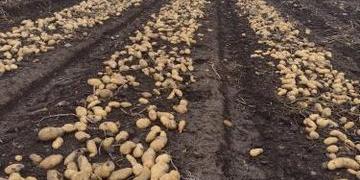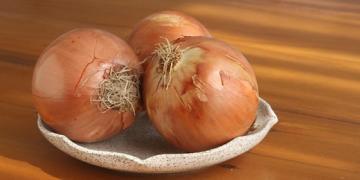Spain: A study indicates that the potato arrived on the peninsula ten years earlier than previously thought
Researchers David J. Caramazana and Manuel Romero Berjerano have found six documents in the Municipal Archives of Jerez that, they claim, confirm that the potato arrived from America to the peninsula in 1563.

Both researchers from Jerez present this finding in the study ’New data for the history of the potato’, published in the Yearbook of Atlantic Studies, as reported by Diario de Jerez.
The study includes a purchase and sale document dated December 10, 1563, in which the dealer Gonzalo Díaz sold to Francisco García in Jerez de la Frontera about 450 arrobas of "potatoes" (5,000 kilos) at three reales and 21 maravedís per arroba.
The document indicates that the cargo of potatoes was on a ship stranded in the Port of Santa María, about 15 kilometres from Jerez, and that to proceed with the delivery the ship would go up the Guadalete River to El Portal de Jerez, the dock in the latter city.
«Healthy and good potatoes make you happy»
"The most interesting aspect of this contract is that it also provides information about the quality of the product: ’good, healthy and good potatoes that will please you and such that they are of giving and receiving and of the price that they will thus mount’, which seems to reveal that they are for human consumption," explain the researchers.
The contract also stated how the buyer would pay, so that "the deal shows high commercial expectations."
The researchers point out that the contract refers to the common potato (Solanum tuberosum). "Although we do not know the origin, we must think of the Canary Islands."
"Its destiny would be human consumption if we base ourselves on the quantity, the price and the mention of ’good healthy potatoes’," they explain. General studies on the history of the potato record the year 1573 as the year of the introduction of the potato in the Iberian Peninsula, specifically in the Hospital de la Sangre in Seville, and that its function was botanical until the 17th century.
"Thanks to this new documentation, we can more accurately predict the date of arrival in Andalusia and its commercialization for human consumption to 1563," say the researchers.
The study publishes other contracts in Jerez in the years 1563, 1564, 1565 and 1568.
«In them we will be able to evaluate both the reception by sea of these products that are known under the terms ’potato’, ’sweet potato’ or ’vatata’, as well as their subsequent trade and distribution.
The potato arrived earlier to the Canary Islands, as historians have documented that in the 1560s it was already in existence and began to be cultivated, and that there was even a first shipment to Flanders in 1567.
Jerez, leader of maritime trade thanks to the Guadalete
The city of Jerez de la Frontera, they explain, was during the 15th and 16th centuries the main political and commercial city between Seville and the Strait of Gibraltar, thanks to its control over the Guadalete River, which flows into El Puerto de Santa María, which allowed it to extend its commercial networks both towards the Atlantic and the North Sea as well as towards the Mediterranean Sea.
Since the reign of the Catholic Monarchs, Jerez has been improving its commercial infrastructure. The city has organised "definitive control" over trade from the Canary Islands and "led the maritime market in the Bay of Cadiz in the 16th century," the researchers explain.
The Municipal Archive of Jerez holds "countless records" of "the constant arrival of products, foodstuffs and even exotic animals from the New World since the first decades of the 16th century", of the wine trade since 1531 and of the shipments organised from Jerez to Peru and the River Plate since 1535.
"It is not surprising that the Crown considered moving the House of Trade from Seville to Jerez de la Frontera, a project that would have completely transformed the future of this city during the Modern Age, but which remained a precedent of what would happen in the 18th century in favour of Cadiz," say the researchers.
Fuente:




